Contributed By
Published
What's in a name? Here newcomers to the series can read about the meaning and origins of the words 'Panzer Dragoon' to bring themselves up to speed.
Contents
Introduction
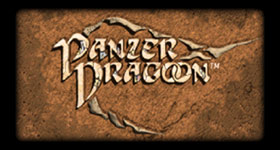
Panzer Dragoon is one of the more intriguing series to have graced the realm of consoles in recent years, and that, of course, is the source of its enduring appeal amongst its dedicated core of ardent fans. The remainder of this site is sufficiently effusive about Panzer Dragoon’s myriad delightful virtues and provides adequately deep discussion of its engaging multi-faceted world and mechanics for me to not be required to repeat them here. There is one aspect, though, which has been largely disregarded by journalists, commentators, analysts, and layman gamers alike - the title (“Panzer Dragoon”, for those who haven’t already guessed yet :p).
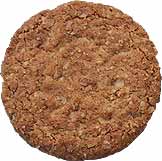
You’ll probably think that this is a purposeless and spurious line of inquiry - after all, everything - be they novels, films, plays, political parties, football clubs, or brands of delicious chocolate-glazed oatmeal biscuit that yearn to be eaten - needs a name, otherwise it is merely “that thing”, the universal non-description which equates the most towering peaks with the blankest flats and so dissolves everything into a vacuous oblivion. Of course, there are a sizeable number of ‘artists’ who create Untitled flattened cigarette packets and flat tyres soaked in olive oil, but that is a title in itself - and a highly descriptive one, as well, expressing “Look! I’m a pretentious, talentless wastrel!”.
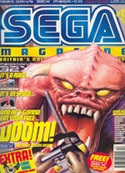
Vague pseudo-philosophic etymological meanderings aside though, names are important, both to identify the product and to highlight it. Panzer Dragoon’s odd title succeeds in both, being an individual name and certainly not a generic “Mr. Smith”, one that is immediately recognisable and idiosyncratic to the individual franchise. Yet there remains something innately strange about the title in question, that renders it apart from others in the grand, expansive panoply of computer games. It isn’t the brutal, visceral, disarming force of Doom; It isn’t the light, bright, stylised science-fiction flourish of Phantasy Star; It isn’t the harsh, gritty, inimical world evoked by a name like Streets of Rage; It isn’t even Phantasy Star III - Generations of Doom or the bare functionality of Space Invaders.
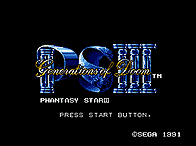
As can be seen above, many game titles are designed to be illustrative, to highlight some aspect of their contents. There remains something of an unfamiliar quality about Panzer Dragoon, though - something like having someone called Gideon amidst a circle of Jacks, Thomases, Jameses and Daniels. It’s an irregularity that agitates our curiosity and thus demands examination and explanation. Just why was the name “Panzer Dragoon” settled upon by the developers, and not something more immediately explicable (if interminably more dull), like “Dragon Dance” or “Destiny’s Spear”, just to pluck out a couple of examples that came to mind?
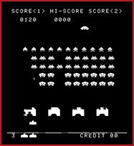
Of course, it’s most probable that there was no particular reasoning or deep, introspective, painstakingly-arranged, laboriously-codified, and agonizingly-planned endeavour to expand even further the fertile loam for discussion immanent throughout the series behind the name “Panzer Dragoon”, and that by assuming the opposite I’m merely warping and distorting reality and contorting it illogically and unreasonably to comply with my own subjective prejudices…
…but if my English master at school can tell me with a straight face that “Penistone Crag” is supposed to represent Heathcliff’s ‘phallic swagger’ in Wuthering Heights, I think that no-one is in a position to complain!
Panzer…
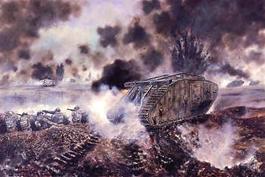
The first constituent word of Panzer Dragoon’s title immediately impresses itself upon us as being decidedly foreign, but nonetheless distinctly familiar - surely no-one needs to be informed that panzer is the German word for “tank”. This ubiquitous war-machine is indisputably a fearsome armament: its tough armoured hide able to shrug off punishment that would have rent the armies of previous generations asunder (The American M1 Abrams has even been described as a nuclear bomb shelter on caterpillar tracks); its own equipment capable of meting out crushing punishment to anything that encounters it; and its insatiable, diesel-guzzling, fume-belching engines characterising the inherently mechanised nature of the modern battlefield that enable countries to be trampled in days rather than months. This is the crucial triad of an armoured vehicle, the “protection, lethality and mobility which we have come to look upon as the role of the cavalry in both attack and reconnaissance”. Whilst recent developments in weapons technology have led some to postulate that the tank will soon be rendered obsolescent, no-one can dispute that it revolutionised an age of war and has become a defining image of battle for the past century - within our own memories and experience.
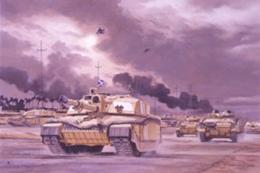
Whilst it is of course a ridiculous notion to claim that they are wholly synonymous with each other (I’ve yet to see a Challenger II being catapulted off the flight deck of the H.M.S. Ark Royal, at any rate), a little lateral reflection shows how “tank” is an eminently appropriate reference to certain aspects of Panzer Dragoon. Lagi, Atolm, Abadd’s dragonmare, and all of the other dragons which collectively are the central keystone of the series can assimilate, absorb and withstand astoundingly large magnitudes of horrendous damage - Lagi can even survive a direct hit from the giga-cannon of the Grig Orig, which scrubbed out the entirety of the settlement of Zoah with but a single discharge during Saga. It’s an image of indefatigability and redoubtable endurance that has infiltrated to other games as well - for instance, a “tank” is the vernacular for a tough character who can occupy the attention of enemies away from weaker party members in the MMORPG, World of Warcraft.
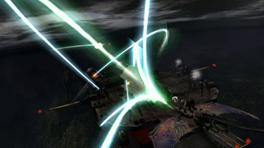
You only need to play any one of the games for a short while to appreciate the truly phenomenal devastation that a single dragon can wreak. Throughout Eins, Zwei, Saga and Orta Lagi gouges an inflamed, immolating, incandescent tear of destruction through billowing clouds of monsters and rigid formations of ships alike, his deadly Arrows of Light slashing, hacking, impaling, skewering, torching and detonating flesh and steel alike without compunction.
The superior speed of a tank is another factor reflected in the dragons of Panzer Dragoon. It is most obvious in Eins, Zwei and Orta, where the virtue of their rail-shooter genre becomes apparent as they allow the protagonist to barrel through enemies, scream through tunnels and hurtle across deserts at truly blistering speeds. An element of it still survives in Saga though, despite it being of the typically more sedate RPG genre - the battle system employed in the third game depends upon maneuverability as well as brute force.
As such, it becomes apparent that “panzer” is a suitable term for inclusion in the series’ title, for tanks reflect several pivotal aspects of the games themselves. Yet then the question dredges itself up from the mud-choked murky depths of your boredom-paralysed subconscious mind (assuming that the dreary subject matter of this article hasn’t already put you to sleep yet) and rears its repellent visage like the Kraken of myth - “Why ‘panzer’, then? Wouldn’t ‘tank’ have sufficed?”
That’s a very good question, and one warranting further elaboration! I’ll proceed to do so if I can make myself heard over the collective groan of The Will of the Ancients’ patrons.
A tank may be resilient, deadly, and rapid in comparison to the methods of fighting that preceded it, but there’s also one dominating characteristic in its public image - bluntness. The vehicle is a hulking, metal behemoth, and so will invariably be accompanied by the mental picture of something lumbering, deafening and dirty. It’s even apparent in the pronunciation of the word - a single, thudding syllable, and not some marvelously aspirated and enunciated manifestation of inspirational philological genius by any means. This is an aspect of the tank that does not lend itself well to Panzer Dragoon, for the dragon is a sleek, gleaming dart of a creature. The image that using “tank” would create is simply incongruent. The foreign import comes to the rescue (a novelty, if nothing else) in a commendably neat and clever dodge, retaining the positive aspect of an association with tanks whilst sidestepping the negative connotation. “Panzer”, by the very fact of it being foreign, is unfamiliar and exotic, something removed from the common rules, ideas and routines of our own regular and mundane lives. The consequence of this is to encourage us to be attracted to the term, whether through its novelty, our own curiosity, or maybe indulging in a desire to escape from the clamours of the rat-race… in abeyance of having a private tropical island full of nubile native girls and a private jet to ferry us there! This positive approach influences us to appreciate the positive aspects and disregard the negative ones, thus enabling the title to gather up all of the beneficial connotations without incurring any of the costs! It’s a deft and dextrous twist of etymology that would make the most nimble of dragons proud.
Another factor in choosing “panzer” is that it aids in further reflecting the culture of the world depicted in the games. We all know that another factor which separates Panzer Dragoon from other games is its possession of its own language, ‘Panzerese’. The creation of an entire language is no mean feat - having spent a while learning Quenya and other products of J.R.R. Tolkien’s passion for philology I can certainly vouch for this - and after investing so much effort in the project it’s only natural that Team Andromeda would want to highlight the fruits of their labour. ‘Panzerese’ is a melding of elements of Latin, Classical Greek, and German, so a German word is straightforwardly suitable for reflecting it.
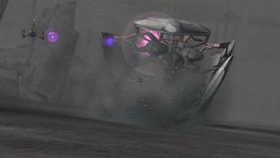
There is even a third layer of meaning behind the selection of “panzer” - and it is, perhaps, the most striking of all of them. With this word, we don’t merely think of tanks but German tanks specifically - and what is the most prominent products of the synergy of both…? The answer is of course, blitzkrieg (a model of this can be seen in the diagram to the left), the stupendously effective mode of war whose fusion of surprising speed and armoured clout brought Germany to the brink of carrying the entire Continent before them during the Second World War, and it has since become adopted as the key tactic of modern armies all over the world. The word we are studying even features in the title of the formal codification of the operation by General Heinz Guderian (based upon theoretical spadework by British strategists, JFC Fuller and BH Liddel Hart), Achtung Panzer. The immense effectiveness of blitzkrieg is immediately comparable to the similar prowess of the dragons - you might say that they are incarnadine manifestations of lightning war, being as they are one of the ultimate weapons of the Ancient Age, and ones who swoop and speed as swiftly as lightning and whose incandescent Arrows of Light strike with all of the blinding ferocity of it.
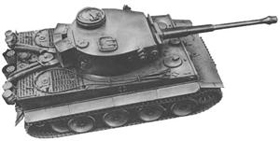
Another appropriate relation of the panzer to the dragon is their quality. Dragons are the pinnacle of warfare in the world of Panzer Dragoon - peerless, unparalleled, and unmatched by anything, whether Ancient Age relic or modern human artifice. Whilst panzer blueprints obviously couldn’t be entitled “Unassailable Supremacy in Three Easy Steps” (after all, if it had been we wouldn’t have John Cleese prancing about urging “don’t mention the war!” and the 1980s would have been bleaker for it - and the 1970s, and 1960s, and 1950s, for that matter…), they were technically superior to many of the vehicles that the Allies arrayed against them - British studies of a Tiger captured in Tunisia in 1943 deemed it “a considerable advance on any allied tank” and famously on 7th July 1943 a single Tiger panzer (under the command of Franz Staudegger) squared off against no less than fifty Soviet T-34s and won, destroying twenty-two and driving off the rest!
Whatever the politics of the Second World War, viewed in a purely military and technological light the panzers certainly aspire to be dragons in kind, if not degree.
…Dragoon!
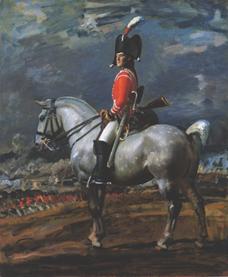
Some people may be tempted to dismiss the second component of Panzer Dragoon’s title as mere linguistic debasement, a ‘quirky’ way of presenting ‘dragon’. Whilst other games seem to have adopted this - Final Fantasy calls its dragon-slayers “Dragoons”, and similarly in another RPG entitled Legend of Dragoon features characters that can mutate in “dragon knights” or “dragoons”.
However, any man with a basic grasp of the military will know that these two RPGs are the ones in error - the “dragoon” is not an invented term but one with a literal real-world definition, and Panzer Dragoon employs it in its correct, accurate sense, as shall be expanded upon below.
Dragoons are a type of military unit that has undergone substantial evolution over the years. They were originally conceived as a hybrid of infantry and cavalry, troops who would travel to the battlefield on horseback but dismount and fight the enemy on foot (the carbines these men would fight with were given the moniker ‘dragons’ due to the smoke and flame they produced. They were later discovered to be an economical and convenient manner of policing crowds, and the term “to dragoon” (whose primary meaning is “To subjugate or persecute by the imposition of troops”) derives from this. Later, dragoons found themselves emphasising the mounted component of their operations to ever-greater extents in order to render themselves more proficient at resisting enemy cavalry, until by the latter eighteenth century they had very much become cavalry themselves, and the term also came to become synonymous with what was originally a different type of military formation.
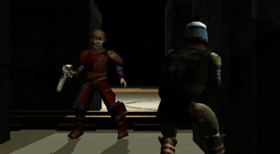
The above is of limited relevance, but it should indicate one pre-eminent factor - that ‘dragoon’ refers not to the steed, but to its rider. In Panzer Dragoon, it is important to appreciate that there are two central protagonists - not just Lagi, but his own rider as well. Indeed, given that Lagi understandably finds it very difficult to communicate given that his vocabulary limited to “SQUAWK!”, “GROWL!” and “SCREECH!” you might understandably say that the dragon-riders are the dominant member in the partnership from our perspective. Whilst you can credibly argue that you battle more like rapid cavalry in the game, given that Lundi, Kyle and Orta remain firmly clamped to Lagi’s back throughout all of their respective adventures, and the fact that the Imperial imitation of him - the dragonmares - were incorporated into a “Cavalry Unit”, in Saga Edge’s experience is diversified by ground exploration. Also, as before, dragoons did come to be recognised as cavalry themselves.
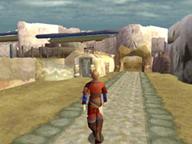
In Panzer Dragoon, it is important to appreciate that dragon and dragon-rider are not separate characters, but operate as a conjoined, symbiotic, single unit - this is a fundamental aspect of each character, apparent even on a mental level through the soul-binding which transpires between each of them. “Dragoon” also satisfies this through another allusion to our own world. In the modern age, mounted cavalry has been rendered obsolescent by various advances in technology. That is not to say that dragoons, lancers, hussars and the rest have died with them, however - they now operate from tanks instead of horses. That provides some superbly seamless synergy with “Panzer” (I don’t think the reason why needs to be laboured further). We can then come to realise that the essential point is that “Dragoon” enables the “Panzer” component of the series’ title to be balanced - it allows the complete hero, which constitutes the fusion of both monster and man, to be represented.
Conclusion
With this, we can appreciate Panzer Dragoon in its fullest nature. “Panzer Dragoon” supplies us the specific perspective from which we view the games, and orients our sight to assimilate and comprehend events through the same eyes and in the same position as the protagonists whose character the quoted title defines. It thus emphasises that however epic the scope of the world or the magnitude or events within it, the characters of Panzer Dragoon are experiencing what is an emotive and deeply personal odyssey for themselves.
It must be conceded that there is no awesome cosmos-shattering philosophical truth about the nature of Creation infused within the title’s syllables and that it ultimately is just an ‘illustrative’ title anchored to some aspect of the game, like in the other titles I mentioned in the Introduction. That said, however, the very fact that explaining “Panzer Dragoon” invited the scribing of a complete discursive essay rather than a single nonchalant sentence, and that the explanation enabled us to touch upon aspects of the world ranging far beyond the limited ken of computer games, is another potent demonstration of just how well-realised, coherent, consistent and engrossingly deep this fantastic series certainly is.
So, we have finally discovered how Gideon acquired his uncommon appellation… and, thankfully, it wasn’t because his parents grew up in a mind-addling cannabis fog in the 1960s!
Bibliography
- The Official Sega Magazine, Issues 5, 12 (May 1994, December 1994). EMAP Images.
- Retro Gamer, Volume II Issue I (No. 13). Live Publishing.
- GamesTM, Issue 34. Highbury Entertainment.
- The British Army: A Pocket Guide 2002-2003, by Charles Heyman. Pen & Sword Books.
- The artwork of David Rowlands, David Pentlands and Sir Alfred J. Munning (images provided courtesy of Cranston Fine Arts and Encore Editions)
- A Nice Cup of Tea And a Sit Down
- The Phantasy Star Pages
- Penguin Classics
- The Unofficial Galaxian Homepage
- Achtung Panzer!
- Wikipedia, the free encyclopaedia
- H.M. Government’s Office for National Statistics
- The Online Dictionary
- The Will of the Ancients’ screenshot archive
